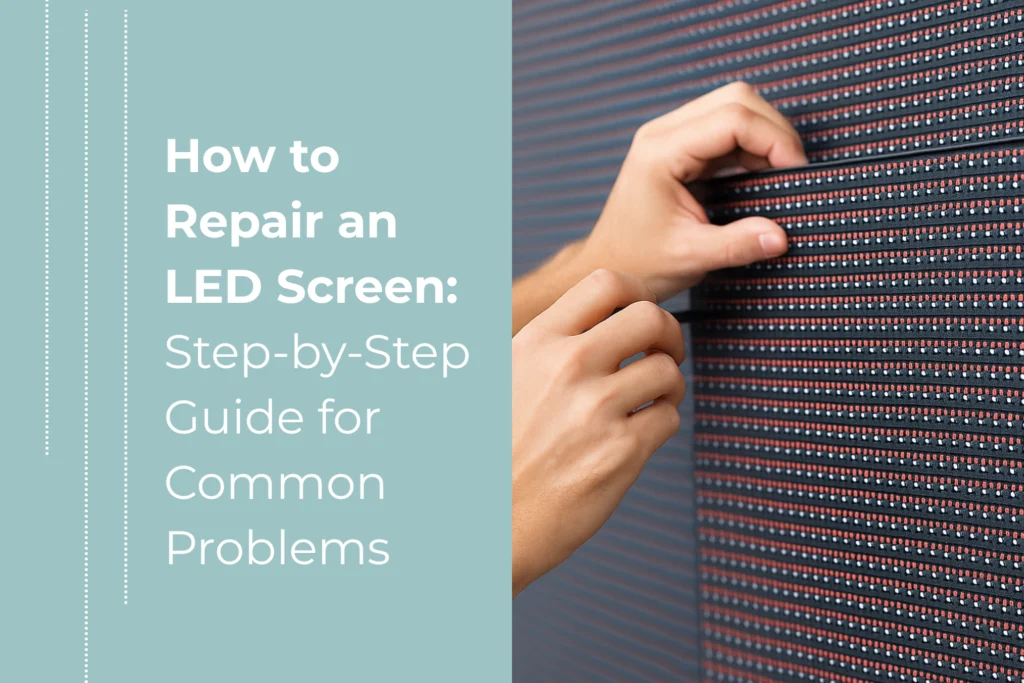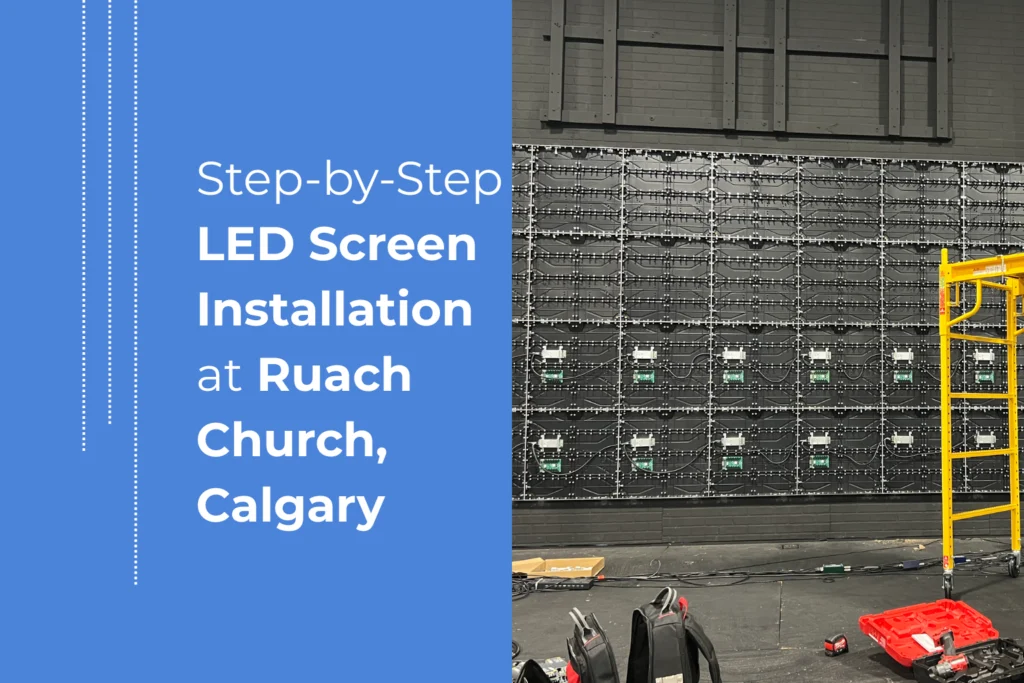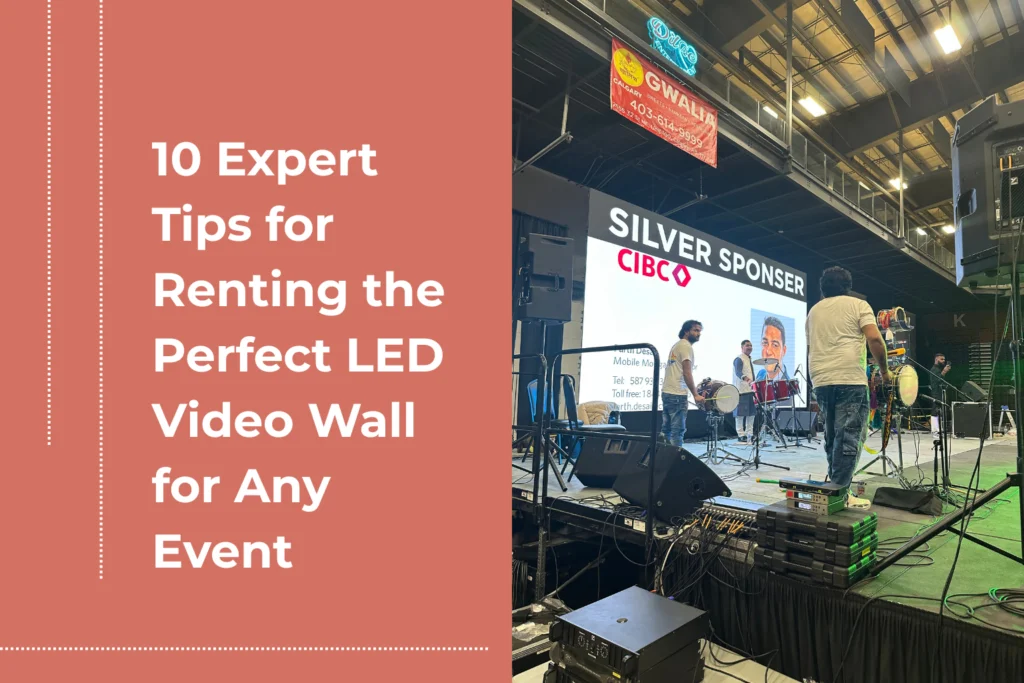Why Churches Are Investing in LED Walls
Churches across North America are increasingly turning to LED walls to enhance their worship experience. Unlike traditional projectors, LED walls provide bright, crisp visuals that are easily visible even in well-lit sanctuaries. They also offer flexibility for live video, song lyrics, sermon slides, and dynamic stage design. From my experience, a well-chosen LED wall can transform the way your congregation engages with services – it’s not just about technology; it’s about creating a more immersive, meaningful experience for everyone.Budget and Video Wall Cost
Budget is often the first consideration for churches. Your budget not only determines the size of your screen but also the pixel pitch, brightness, and additional features you can afford. To give you a sense of pricing, a typical 10×6 ft LED wall might start around $15,000–$20,000, including installation. A 15×8 ft screen could range from $30,000–$50,000, while a larger 20×10 ft setup may cost $60,000 or more. These estimates vary based on specifications, installation complexity, and the type of panels you choose. It’s important to remember that while the upfront investment may seem significant, LED walls for churches are long-term assets. High-quality panels often last 10–15 years, and the difference in image quality, brightness, and reliability compared to projectors is substantial. Proper planning at the outset saves headaches and extra costs down the road.Venue Size and Screen Dimensions
Choosing the right screen size depends largely on your church’s capacity and stage layout. The goal is to ensure everyone can see the visuals clearly, from the front row to the last seat. Based on my experience installing LED walls, here’s a practical guideline:- Small churches (150–200 attendees): A 10×6 ft LED wall is usually sufficient. It ensures clarity without overwhelming the space.
- Medium churches (200–500 attendees): A 15×8 ft screen provides a great balance of visibility and impact.
- Large churches (500+ attendees): A 20×10 ft screen ensures crisp visuals even for those seated farthest from the stage.
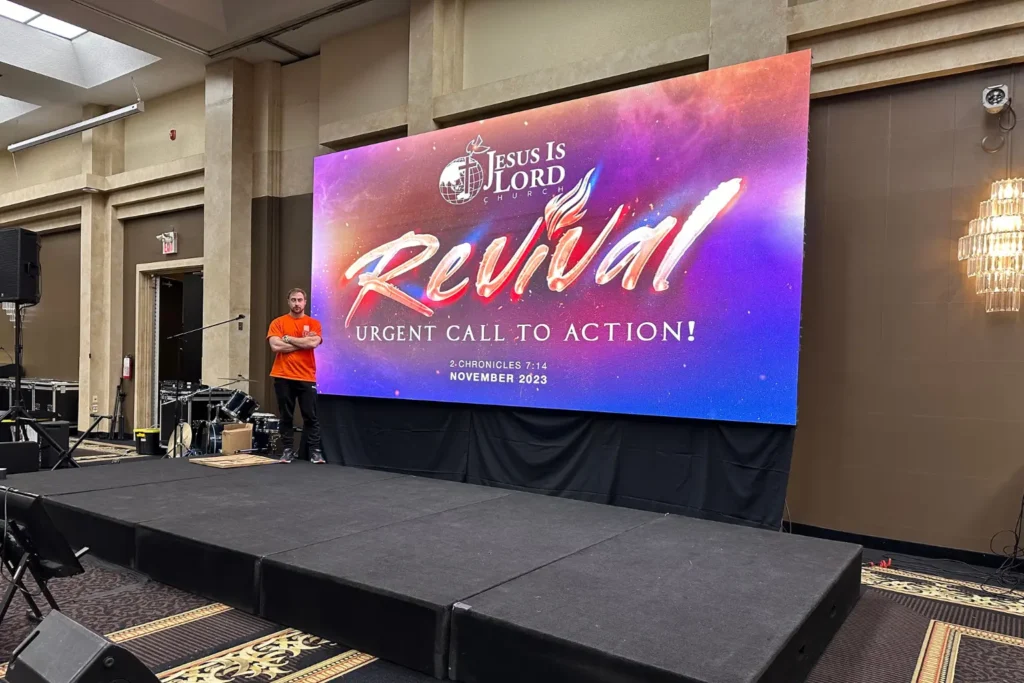
Aspect Ratio and Panel Configuration
LED wall panels are usually square, which means achieving the standard 16:9 video aspect ratio requires careful planning. This ratio is important because most video content, from sermon slides to recorded services, is designed for widescreen. Common configurations include 3×5, 4×7, 5×9 panels, and similar setups. Slight deviations from 16:9 are generally unnoticeable to most viewers, but staying close to this standard avoids black bars or distorted visuals. In my experience, aligning your screen’s aspect ratio to the content format you use daily is more important than pushing for a perfectly symmetrical panel layout. It’s about making your visual content look natural and professional.Pixel Pitch and Viewing Distance
Pixel pitch – the distance between individual pixels on an LED panel – is critical for ensuring sharp, detailed images. The smaller the pixel pitch, the crisper the picture, particularly for audiences seated close to the screen.- 2.5mm pixel pitch: Ideal for indoor churches with closer seating. Provides sharp images while remaining affordable.
- 4.0mm pixel pitch: Works well for larger venues where the audience is further away.
Brightness and Visibility
Brightness is measured in nits (or cd/m²) and determines how visible your screen is under various lighting conditions. For comparison, a typical home TV has about 100 nits of brightness. For churches, I recommend LED walls with 500–700 nits. This ensures vibrant visuals even with large windows or bright sanctuary lighting. Unlike projectors, LED screens maintain their visibility regardless of ambient light, which is particularly important during daytime services or venues with substantial natural light. From installations I’ve done, this brightness level allows for live video, graphics, and text to remain clear and impactful without adjustments to lighting.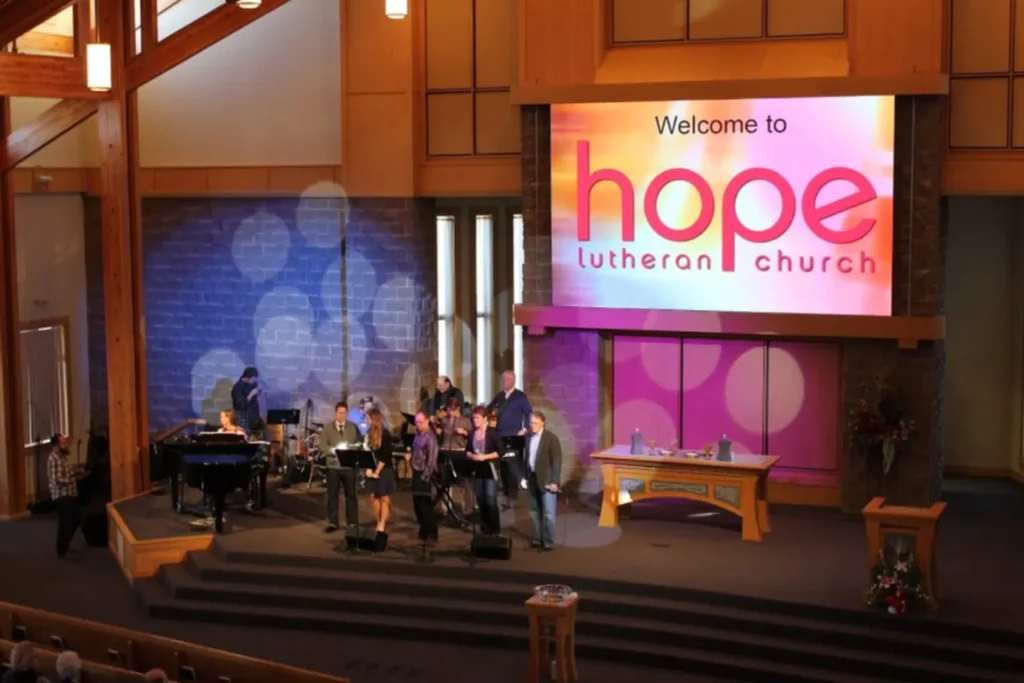
Refresh Rate and Smooth Motion
The refresh rate, measured in Hertz (Hz), determines how smooth motion appears on your screen. A higher refresh rate eliminates flickering and ensures professional-quality visuals, especially for live streaming or video playback.- Recommended minimum: 3,840 Hz for most churches.
- Higher-end setups: 6,000 Hz for video-heavy or dynamic content.
Power and Infrastructure Requirements
Before purchasing, it’s essential to consider your church’s electrical capacity. For example, a 100-square-foot LED wall may require roughly 30 amps of power. Larger screens will naturally consume more. Planning ahead prevents power interruptions and ensures consistent operation during services. I’ve seen installations where early power assessments saved churches from expensive upgrades later on.Installation and Setup Options
LED walls can be installed in multiple ways, each with unique advantages:- Wall-mounted: The most common and space-efficient method.
- Hanging from a bar: Offers flexibility but requires structural support.
- Ground support: Takes more space and is usually more expensive, but allows future relocation or expansion.
Lifespan and Maintenance
LED modules typically last around 100,000 hours, translating to 10–15 years of use. Choosing modules with this standard ensures that your investment is durable and reliable. Additionally, front-service panels allow for easy maintenance and quick module replacement, which is particularly important for churches where AV teams may not have time for complicated repairs.Processor and Control Systems
The processor is the heart of your LED wall. Larger screens require more powerful processors to handle high-resolution content smoothly. Brands like NovaStar are widely used for their reliability and scalability. In my installations, selecting the correct processor for the screen size prevented lag, ensured smooth transitions, and allowed dynamic content to run without interruption.Certification and Safety
Safety should never be overlooked. Always use panels certified by UL or ETL in North America. Certified panels meet electrical and fire safety standards, which is critical in public spaces like churches. Uncertified parts may pose risks, including overheating or fire hazards, and can compromise long-term reliability.Training and Ongoing Support
A good LED wall is only as effective as the team operating it. Ensure your supplier provides setup assistance and training for your AV staff. Canadian LED, for example, configures the screen and trains the team to operate it confidently, ensuring the investment is fully utilized.Long-Term Vision and Scalability
Planning for growth is important. LED screens aren’t inherently extendable, and adding panels later may result in color or brightness inconsistencies due to manufacturing differences. Investing in a high-quality screen upfront and planning for future expansion (like a second screen) ensures consistency and reduces long-term complications.Choosing the Right Supplier
Selecting a reliable supplier can make a huge difference. Look for companies that offer:- Warranty and spare parts availability.
- Expertise in LED screens for churches.
- Installation, configuration, and training services.


